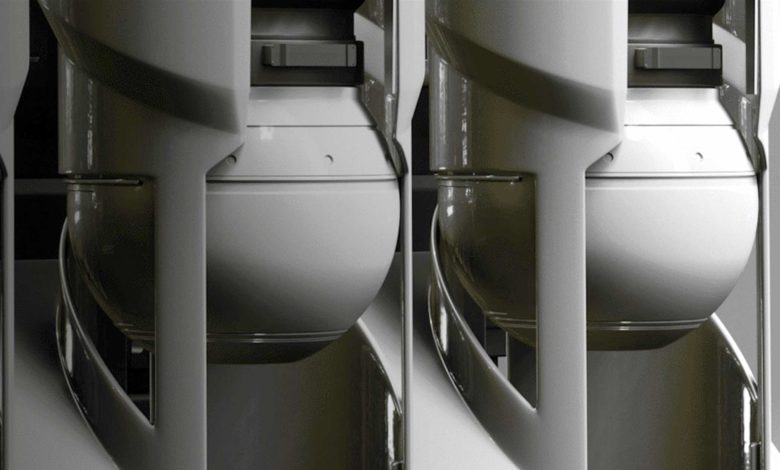Nuclear-powered ships make waves in Glasgow

Among the many backers of energy sources lobbying hard in Glasgow this month during COP26, a major international climate summit, proponents of nuclear power are expecting to make inroads with regulators and the general public alike.
When it comes to merchant shipping, which has entered a crucial decade of energy transition, there has never before been such strong backing for atomic power as today with multiple projects around the world in various stages of advanced development.
John Kerry, the US climate envoy, hinted on Monday at a shipping decarbonisation press event at COP26 that shipping ought to look more into nuclear propulsion.
While stressing that this was not an official American policy, Kerry related how as a former US Navy man, he was a fan of nuclear power, something that has worked without any casualties in the American military for more than 70 years.
CORE POWER, arguably the highest profile marine atomic developer in the market, now has the backing and investment from a host of owners who, combined, control more than 2,000 ocean-going vessels.
Speaking with Splash, Mikal Bøe, CORE POWER’s CEO, was quick to praise Kerry for his pro-atomic stance.
“Kerry is 100% right, nuclear is the safest and most reliable energy source there is and the US Navy has several generations of flawless performance under their belt,” Bøe said.
Commercial shipping cannot use that naval technology so Bøe and other companies around the world are building civilian grade advanced atomic designs for shipping.
“It’s the only true-zero emission technology there is and with the molten salt reactor we get all that benefit and at a low cost,” Bøe said of his company’s atomic creation.
CORE POWER completed its Series B-1 funding round this autumn and the first prototype reactor is now fully funded by TerraPower, Southern Company, CORE POWER and the US Department of Energy.
“Technology needs customers, and our shareholders now represent ownership of over 2,000 large ships, all of which are in line for the first generation of MSRs,” Bøe revealed. Among confirmed shipowning investors into CORE POWER are Berge Bulk and Sea Consortium, both from Singapore.
Other notable marine atomic developments are taking place in South Korea where shipbuilding major Samsung Heavy Industries has teamed up with the Korea Atomic Energy Research Institute while Seaborg Technologies in Denmark is building floating power barges, and the Canadians are working with NuScale to develop marine power stations. The Russians, meanwhile, already have the market domestically and are now touting a huge new next generation nuclear-powered icebreaker as further proof of their maritime atomic expertise. Not to be left out, Chinese scientists are developing their own atomic propulsion technologies for both merchant marine and offshore facilities.
China has been testing a thorium-powered nuclear reactor this autumn, the world’s first since 1969. The Chinese, like CORE POWER, believe new molten-salt technology is far more flexible and easier to roll out than existing nuclear technology.
China has let it be known recently it is planning at least 150 new reactors in the next 15 years, more than the rest of the world has built in the past 35. As early as the middle of this decade, the country is on track to surpass the US as the world’s largest generator of nuclear power.
There are a host of well known names in shipping who are increasingly vocal about the swift, immediate benefits of adopting atomic propulsion.
Speaking with sister title Splash Extra last month, Ugo Salerno, the CEO of RINA, the longest serving head of any member of the the International Association of Classification Societies (IACS), discussed his keenness for shipping to adopt nuclear power.
Bjørn Højgaard, the CEO of shipmanager Anglo-Eastern and chairman of the Hong Kong Shipowners Association, has been among the most unflinching supporters of the energy. Speaking at an event convened by China Merchants last month, Højgaard reaffirmed his nuclear position. The technology is there, we now have to ensure it is even safer than its already enviable safety record, as well as undertaking a major marketing campaign to get public acceptance, Højgaard told delegates in Hong Kong.
The Dane has discussed atomic power a great deal over the years, telling Splash Extra 13 months ago: “I think that in 50 years nuclear molten-salt-reactors will be par for the course in the shipping industry, and we will look back at the current time and wonder why we dabbled in alternative pathways for greenhouse gas-free propulsion.”
According to data from the International Atomic Energy Agency, the UN nuclear agency, nuclear power now accounts for more than a quarter of all energy generated from non-fossil sources.

Bull biscuits sail wind jammer style with small generators and photo voltaic cell all over the ship and sails can do the trick . Don’t be stupid
Hm.. Why existing nuclear merchant ship was not mentioned? It is currently transporting components of new nuclear reactor
Nuclear powered vessels have been around for several decades but most people are unaware of it. Perception is everything.
I agree Joe Dee,
In India there has been a great resistance to nuc power reactors and with difficulty Kudankulam went critical some years ago. While Chernobyl was forgotton, Fukushima disaster did further add opposition from various pressure groups across. There is a lot of info which is still hidden from public view especially in Nuc area but it is being used in a number of industries. But Splash is doing a good job of bringing it forth quite a bit of it.
Dear Sam Chambers,
Very vivid new information. would be happy to know how many ships are on Nuclear power presently and if the common standards have been worked for a safe and economic use of this cheaper, net zero, large scale capability source of power.
Appreciate
https://world-nuclear.org/information-library/non-power-nuclear-applications/transport/nuclear-powered-ships.aspx
thanks alof of information